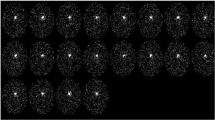Abstract
A patient who post-operatively develops hyperkalemia is treated with sodium zirconium cyclosilicate (Lokelma®), a novel agent used for the treatment of non-life-threatening hyperkalemia with reduced side effects as compared with its predecessors. On CT imaging of the chest, abdomen, and pelvis, a radiopaque fluid is noticed despite the patient not having received any oral or intravenous contrast nor any medications or supplements that may appear radiopaque. Based on previous CT imaging of zirconium-based tooth implants and their radiopaque appearance on images, it is hypothesized that the sodium zirconium cyclosilicate that the patient was administered is the explanation of the radiopacity on CT imaging. We performed an in-vitro experiment to confirm that Lokelma is radiopaque to support our hypothesis. It is important to fully understand the differential of what may cause different appearances on imaging as well as to eliminate potential sources of artifact prior to imaging, or alternatively, to potentially be able to use medications with known radiopaque properties as alternatives to contrast agents.







Similar content being viewed by others
References
Savitt DL, Hawkins HH, Roberts JR. The radiopacity of ingested medications. Ann Emerg Med. 1987;16(3):331–9.
Hoy SM. Sodium zirconium cyclosilicate: a review in hyperkalaemia. Drugs. 2018;78(15):1605–13.
Sodium zirconium cyclosilicate (2018) In European Medicines Agency [database on the internet]. European Medicines Agency, Amsterdam, Netherlands [updated 07/05/2020, cited 15/2/2021]
McCarney B, Binkley N, Krueger D (2020) A newly recognized DXA confounder: the potassium-binding medication sodium zirconium cyclosilicate. J Clin Densitom 21:S1094-6950(20)30089-5. Epub ahead of print
Smeets R, Schöllchen M, Gauer T, Aarabi G, Assaf AT, Rendenbach C, et al. Artefacts in multimodal imaging of titanium, zirconium and binary titanium–zirconium alloy dental implants: an in vitro study. Dentomaxillofac Radiol. 2017;46(2):20160267.
Fontenele RC, Nascimento EH, Vasconcelos TV, Noujeim M, Freitas DQ. Magnitude of cone beam CT image artifacts related to zirconium and titanium implants: impact on image quality. Dentomaxillofac Radiol. 2018;47(6):20180021.
Kaplan M, Ozeri Y, Agranat A, Brisk R, Eylath U. Antacid bezoar in a premature infant. Am J Perinatol. 1995;12(2):98–9.
Iwamuro M, Saito S, Yoshioka M, Urata H, Ueda K, Yamamoto K, Okada H. A magnesium oxide bezoar. Intern Med. 2018;57(21):3087–91.
Author information
Authors and Affiliations
Corresponding author
Ethics declarations
Informed consent
Informed consent was obtained from all individual participants included in the study.
Additional information
Publisher's Note
Springer Nature remains neutral with regard to jurisdictional claims in published maps and institutional affiliations.
About this article
Cite this article
Kolesnik, M., Berezovsky, D., Sayegh, M. et al. Radiopacity of sodium zirconium cyclosilicate on CT imaging. CEN Case Rep 10, 559–562 (2021). https://doi.org/10.1007/s13730-021-00607-9
Received:
Accepted:
Published:
Issue Date:
DOI: https://doi.org/10.1007/s13730-021-00607-9




